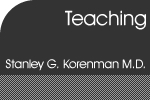

|
<< Previous Section | < Previous Page | Next Page > | Next Section >>
Bibliography (page 10 of 11) Flynn, J. T. (2003). "Ethics of Placebo Use in Pediatric Clinical Trials: The Case of Antihypertensive Drug Studies." Hypertension 42(5): 865-869. This is a very useful paper in that it confronts the two issues of initial importance, when it's ok to use placebo and with which children it was reasonable to do that. http://hyper.ahajournals.org/cgi/content/full/42/5/865 Onder, R. F. (2005). "The ethics of placebo-controlled trials: The case of asthma." Journal of Allergy and Clinical Immunology 115(6): 1228. The author, owner of a clinical research organization, supports the use of placebos in asthma trials for the usual reasons: ease of determining effectiveness, ability to measure adverse events better, evaluating somewhat less effective therapies, minimizing exposure to a trial of inefficacious agent, studying clinical situations in which withdrawal of a modality may be efficacious. Elaborationg on the concept of assay sensitivity of a trial, the case is made that if standard therapy does not always produce statistical benefit then the trial is a weak method for showing superiority or non-inferiority, the requirement of a comparison study. A well done argument. http://www.sciencedirect.com/science/article/B6WH4-4FSCMDP-D /2/26f7dc0e9b2e74d424ee8a9c1d1394c0 Wendler, D., L. Belsky, et al. (2005). "Quantifying the Federal Minimal Risk Standard: Implications for Pediatric Research Without a Prospect of Direct Benefit." JAMA 294(7): 826-832. This thoughtful paper tries to define risk in ordinary life for children in order to quantify the federal rule that children who participate in studies with no benefit to them not be exposed to risks greater than "ordinarily encountered in daily life or during routine physical or psychological examinations or tests." By using the risks of an auto accident or a sports injury one can perhaps define the risks to children to compare with the potential adverse effects of participating in research. http://jama.ama-assn.org/cgi/content/abstract/294/7/826 Onder, R. F. (2005). "The ethics of placebo-controlled trials: The case of asthma." Journal of Allergy and Clinical Immunology 115(6): 1228. Using asthma as the example, he indicates the rationale for conducting placebo-controlled trials. The include the usual -- better science, smaller number of subjects at risk, less chance for adverse events, and truly knowing the rate of adverse events. Others include the use of less effective (maybe cheaper) therapies. http://www.jacionline.org/article/PIIS0091674905003192/abstract Young, S. (1998). "Risk in research--from the Nuremberg Code to the tri-council code: implications for clinical trials of psychotropic drugs." J Psychiatry Neurosci 23(3): 149-55. The author discusses research risk as delineated by the Nuremberg Code, the Declaration of Helsinki and various Canadian guidelines. He concludes that none of them really define risk well. He then discusses the implication for research on psychotropic drugs. Tigges, B. (2003). "Parental consent and adolescent risk behavior research." J Nurs Scholarsh 35(3): 283-9. This report compares active and passive parental consent for school-based behavioral research and comes clearly down on the side of passive consent. It has to be consistent with federal regulations to avoid the possibility of legal consequences. Kiskaddon, S. H. (2005). "Balancing Access to Participation in Research and Protection from Risks: Applying the Principle of Justice." J. Nutr. 135(4): 929-932. This paper discusses the apparent conflict between applying the justice principle with the protection of subjects in the IRB approval process. The suggestion is made that proper application of the principles of autonomy and beneficence will facilitate adherence to the justice principle. http://jn.nutrition.org/cgi/content/full/135/4/929 << Previous Section | < Previous Page | Next Page > | Next Section >> |
Chapter 3 Quick Links Ethics and Study Design Introductory Ethics Design Appropriate Risk to Benefit Ratio Selection of Subject Populations Cases Bibliography Chapter 3 Download (PDF) |